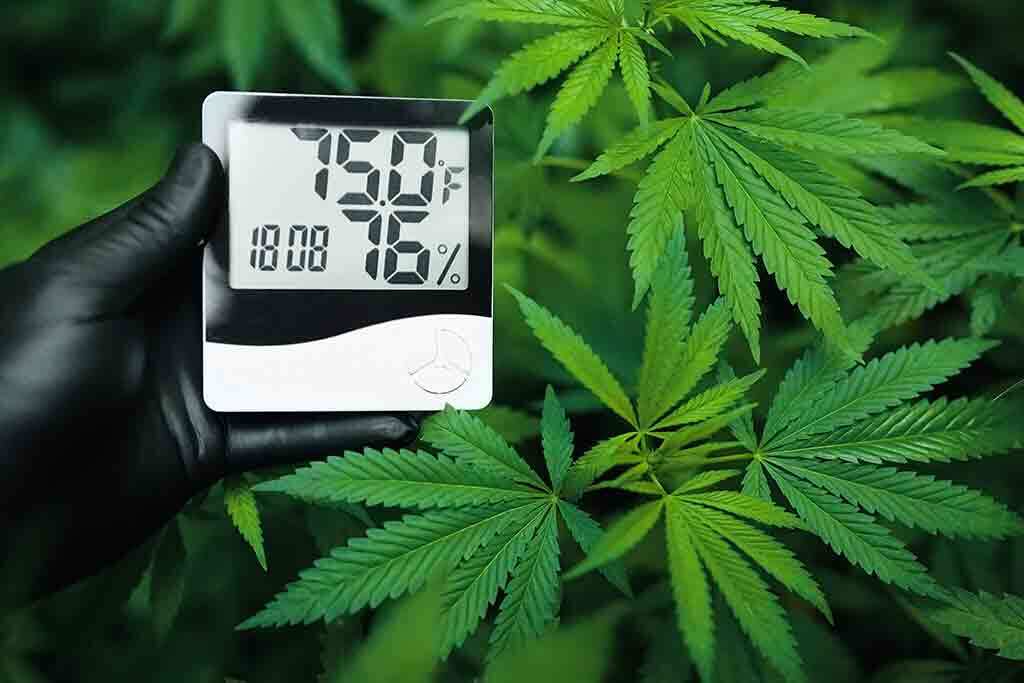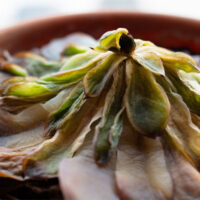Plants rely heavily on the environment in which they grow and self-sustain, absorbing sunlight for photosynthesis, using the air to stay cool, and as a source of carbon dioxide. Different plants prefer different conditions, so it’s important that their ambient temperature and humidity are just right. No matter the size, a Grow room basically creates a climate for the plants. The correct temperature and humidity levels are important for establishing and maintaining healthier crops. Avoid extremes when controlling levels within a grow room or grow tent and fine-tune it to meet the specific needs of your plants. So how to control grow room temperature and humidity?
Related Reading: Best Water Temp For Growing Weed
Table of Contents
What is Temperature?
Temperature is one of the four main environmental controls that you, as a grower, need to track and adjust to maximize yields. Other factors include humidity, lighting, and ventilation. Temperature is critical to perfection, as it affects how well a seed germinates and how efficiently a plant photosynthesizes blooms, and fruit. The ideal growing room temperature varies depending on the variety you want to grow, but most plants thrive at room temperature.
For plants to reach their full potential, they must be able to grow within a specific temperature range. Otherwise, their yields may be smaller, of lower quality, or not viable. One of your many challenges is maintaining the ideal temperature for your plants and keeping your growing space cool. Heat sources such as grow light and outdoor climate, depending on your situation, can raise the temperature of the grow space.
If the temperature in the grow tent is too high, your plants will close the stomata, which are used to transmit water vapor. The trapped water can overheat, resulting in poor growth and unhealthy plants. Additionally, the sugar energy your plants use to make flowers and fruits will be used to sustain themselves.
While you want to keep the temperature low, don’t go too low, as the cold can also damage the plants. In addition to generally slowing and minimizing growth, cold can freeze plant cells and cause tissue death if temperatures are too low.
What is Relative Humidity?

Relative humidity refers to the amount of water vapor in the air at a given temperature, the gaseous state of which is invisible to the naked eye. There are many sources of water vapor in the atmosphere, including animal respiration, evaporation from snow and water, and plant transpiration. Eventually, the water vapor condenses into clouds or fog.
Plant growth is affected by relative humidity, which affects the amount of water in the stems and leaves of plants.
The more humidity in the air, the less moisture it can “hold” because air can only hold so much water vapor. Plants, like humans, secrete sweat, which increases relative humidity. This is achieved by opening the stomata, which are the only time the plant does photosynthesis. If the stomata close, photosynthesis stops completely.
About 5% of the water taken up by plants is retained and the remaining 95% is discharged back into the environment. With so much water returning to the air, it’s important to keep your tent’s relative humidity stable and at the right level. Doing this will give your plant room for transpiration, keep it cool and absorb nutrients from the soil.
If your grow room humidity is too high, your plants will not be able to transpire and will retain the moisture they have absorbed. This can overheat and dry them out, while not absorbing more water and nutrients. High humidity can also cause bud rot, mildew, and mildew. Conversely, if your grow room humidity is too low, your plants will dry out as they try to compensate by transpiring. Your plant then closes its stomata, preventing itself from drying out further and stopping photosynthesis.
Why Controlling Temperature & Humidity Is Important
From germination to growth, flowering, or fruiting, you can create an optimal environment for your plants by controlling temperature and humidity levels. Plant metabolism needs cool nights to rest – about 10 degrees lower.
Plants are constantly absorbing water to absorb nutrients and reach their full potential. Both temperature and humidity affect the amount of water a plant absorbs, so controlling these levels can also control the plant’s nutrient intake.
Signs of Extremes in Temperature
When temperatures rise too high or fall too low, your plants are adversely affected.
When plants are too hot you may notice:
- Leaves that are yellow or have brown/yellow spots
- Leaves that are curled up or wilted
- Blooms or fruit dropping off
- Blossom end rot for scalded plants
When plants are too cold you may notice:
- Wilting or drooping leaves or stems
- Splits in woody stems
- Very loose root balls
- Spots on flowers and leaves that look burned
Signs of Extremes in Humidity
Humidity levels are important in indoor growing because humidity affects transpiration (plant respiration) and its ability to absorb nutrients. Low levels also create an environment for pests and diseases to thrive.
When humidity levels are too high you may notice:
- Mold and bud rot can make plants completely unusable
- White powdery mildew on leaves
- Excessively damp leaves
- Underdevelopment of young plants & slow growth
When humidity levels are too low you may notice:
- Slowing or stopping plant growth
- Burning on the tips of leaves (too much nutrient intake due to lack of moisture)
The early stages of growth require higher humidity than the rest of the growth cycle. During early germination or clonal growth, a humidifier is often added to increase growing space, while a dehumidifier may be required later in the growing process.
Thermometers and Hygrometers for Grow Rooms
Monitoring your tent’s temperature and humidity is critical to controlling its levels, especially since different plants have different climate preferences. Whether standalone or built into existing grow technology, you’ll need a thermometer and hygrometer to keep track of current levels. These measuring devices will display the current temperature and humidity of your grow tent, respectively, allowing you to master the climate control of your grow space.
Now that you know what the ideal conditions are for your plants, how do you stabilize them when there are peaks and valleys? Ideally, temperature and humidity cycles should appear as smooth moving waves, rather than jagged spikes and valleys in graphical readouts. There are several signs you can keep an eye out for with digital thermometers and hygrometers, including the effects of time, indoor light cycling, and water cycling. Extreme highs or lows in readings are clear signs of balanced climate conditions.
How to Adjust Temperature & Humidity

Control Temperature Level
Temperature and humidity are closely related, so maintaining the right temperature in the growth chamber will also help control humidity levels. Also, plants need cool nights when they appear naturally, but may need help sometimes.
Even with a well-insulated grow room, high temperatures can be a problem if you live in a hotter climate. And, if your grow room is inaccessible from a ducted HVAC system, cooling can be a challenge.
One of the best ways to do this is with a ductless mini-split air conditioner. These systems have a condenser unit that operates outside the structure (building) and a wall-mounted air handler that is usually installed in the grow room.
Many of these units also have heat pumps if the temperature drops too much during the colder months.
For smaller grow spaces, using a portable air conditioner or through-the-wall unit can help reduce and maintain proper temperatures.
For grow rooms in cooler climates, the logical answer is to add a sturdy heater that can generate significantly more heat than most small room heaters.
Control Humidity Level
Living in a high humidity area, or your grow room has high relative humidity? Or are you having trouble keeping enough moisture in the air in your grow space?
For grow rooms that tend to maintain high humidity, the best way to reduce humidity is to use a dehumidifier. A dehumidifier draws moisture from the air in your grow room or grow tent. They come in a variety of sizes, from portable units for small rooms to large industrial dehumidifiers for large grow spaces.
Remember, dehumidifiers collect moisture, so they need to be emptied or drained. Look for a dehumidifier with an onboard hygrostat that automatically maintains a set humidity level.
For grow rooms that are prone to losing moisture, the most effective way to increase or maintain the correct relative humidity is to add a humidifier. Look for a large humidifier with several gallon tanks to reduce the frequency of refills. If you’re using an HVAC system to control the temperature, adding a flow-through or drum humidifier to your system might be a good plan.
Conclusion
Before using these tools, you can reduce the effects of outdoor climate by properly sealing and insulating your grow space to avoid fluctuations and light leaks. Be sure to space out the plants, as overcrowding can increase humidity. If you need to make adjustments to meet your needs, you can reduce the impact of outdoor climate by properly sealing and insulating your grow space before using these tools to avoid fluctuations and light leaks. Be sure to space out the plants, as overcrowding can increase humidity.

















